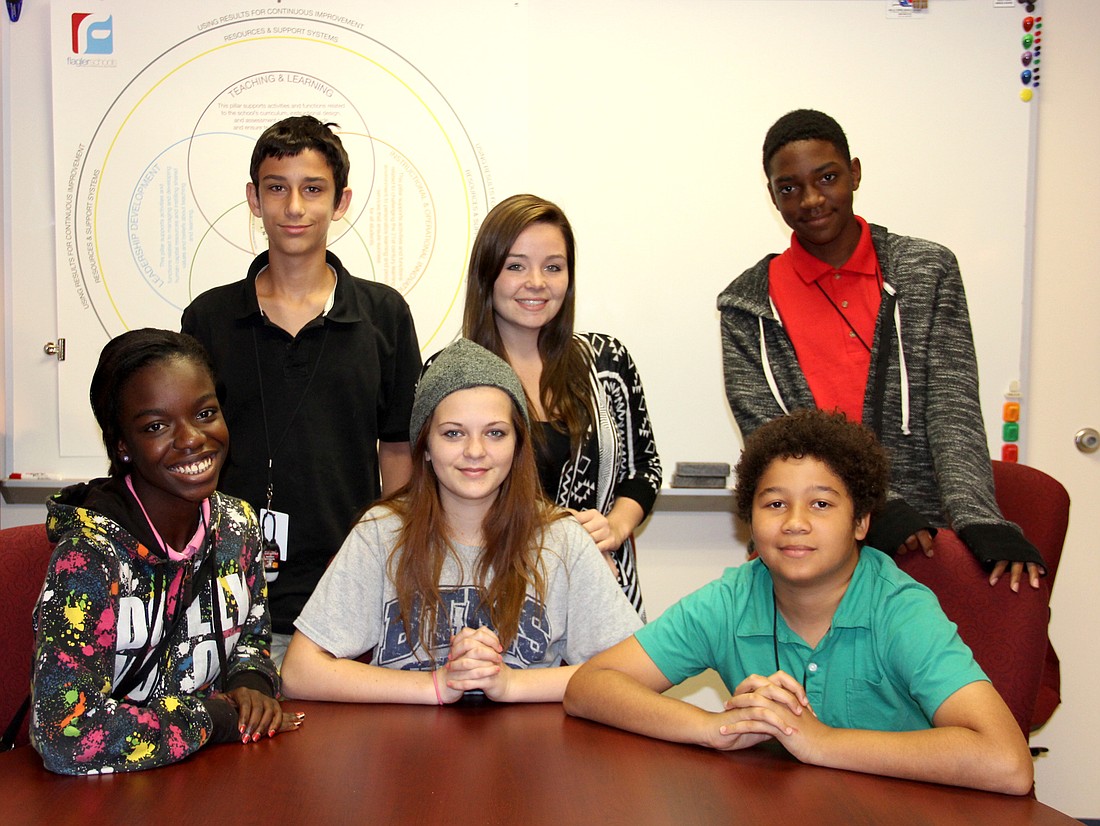- December 13, 2025

Allyson Imperio might not have been able to follow a dream to go into the astronaut program, but the Buddy Taylor Middle School Science teacher is heading up a seventh grade team that will compete in the Florida Student Astronaut Challenge in February 2016.
The five-student team had very little time to prepare for regional competition but their mission was successful.
“I found out about it two weeks before the regional competition,” Imperio said. “Nine days,” she corrected herself after a look from student Ryan Little.
When the idea was presented to her she had two days to form a team so the entry fee could be submitted.
“I proposed it to the class, “hey guys, who wants to do this? And they said they were down,” Imperio said.
Their first challenge was to score high enough on the regional tests to advance to state competition at the Kennedy Space Center next year -- no problem.
“The competition was Sept. 23 at University High School in Orlando,” she said. “There was a 100 question test, basically on aerophysics and space flight.”
Typically Imperio teaches a little bit of physics, biology, and geology, but not aerodynamics in her science classes.
“NASA and FSU worked together and they gave us a whole bunch of materials to study from,” she said.
The students rose to the challenge staying after school to work in groups and taking on extra studies at home.
The team is the first composed of middle school age students to participate in the competition. In previous years it has only been offered to 9th through 12th grade students.
The team members aren’t the only ones having to study a little extra. Imperio also has to go back to school. When it comes to NASA and flight specific information, she is learning with the kids.
“The next big step is I have to go to training on Nov. 7,” she said. “I will be in Tallahassee for three days. Learning everything they are going to have to do so I can train them properly.”
The team has already begun to study the technical manual and learning how NASA communicates.
“We’re learning about the pilot, the commander the mission specialist and what they do; what are their roles?” Imperio said. “When I get back from my training then we actually start practicing with the flight simulator.”
In the State Competition the team will have to compete on a flight simulator; then they will be presented with an emergency, something will go wrong and they will have to develop a plan to overcome it so their mission doesn’t get aborted.
“They will present a Lab proposal, design a lab and present it to NASA and the judges, and if that wins it will actually be done on the International Space Station. Then there is yet another test.
Their first challenge is to find a simulator to use to practice before the competition.
“The flight simulator runs on PC, we are on Mac so they are looking everywhere so we can start practicing,” Imperio said. “They use the Endeavor flight simulator.”
Rayann Raymond thought competing would be fun and, since her dad was a pilot, she thought he would be happy to see her in the competition.
“It is more than I expected, but I am enjoying it,” Rayann said. “I want to put it on my resume.”
Ryan Little said he wanted to learn about space flight and aerodynamics, but is not interested in a career in the space program.
Imperio explained what kept her out of the astronaut program – her height.
“I was an aspiring astronaut, but I never grew. I am 5 foot and you have to be 5’ 3”.